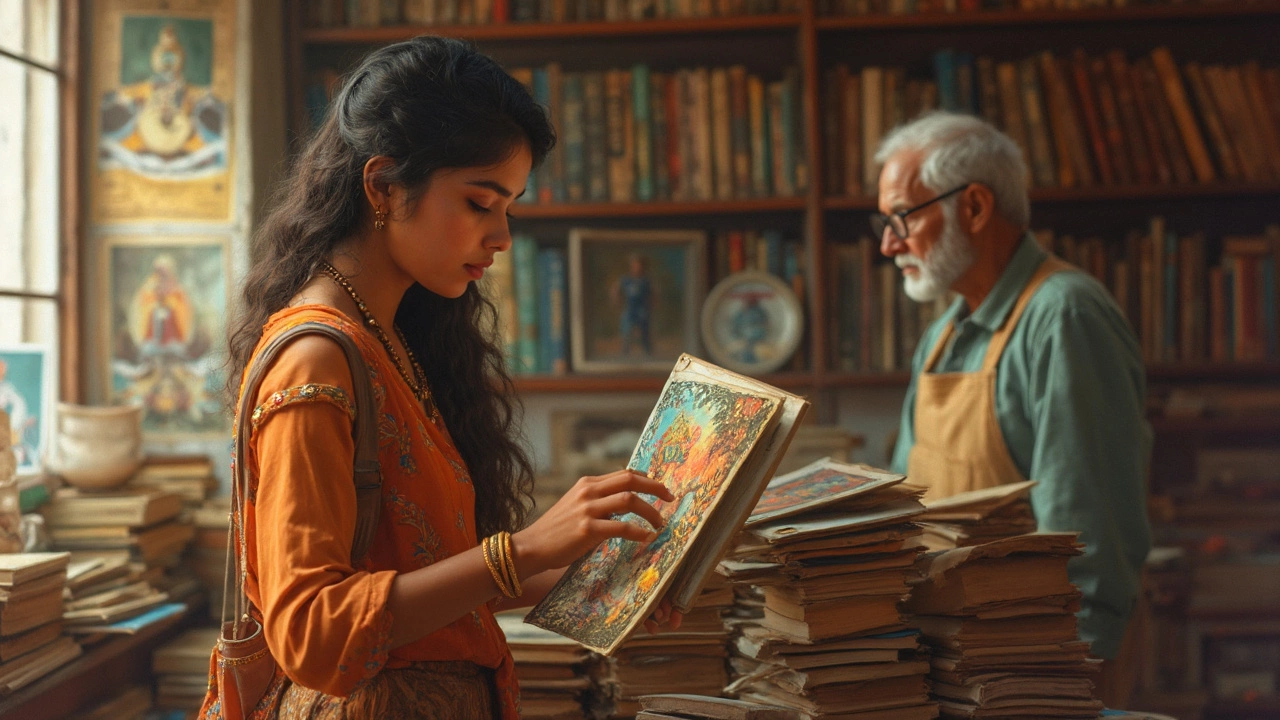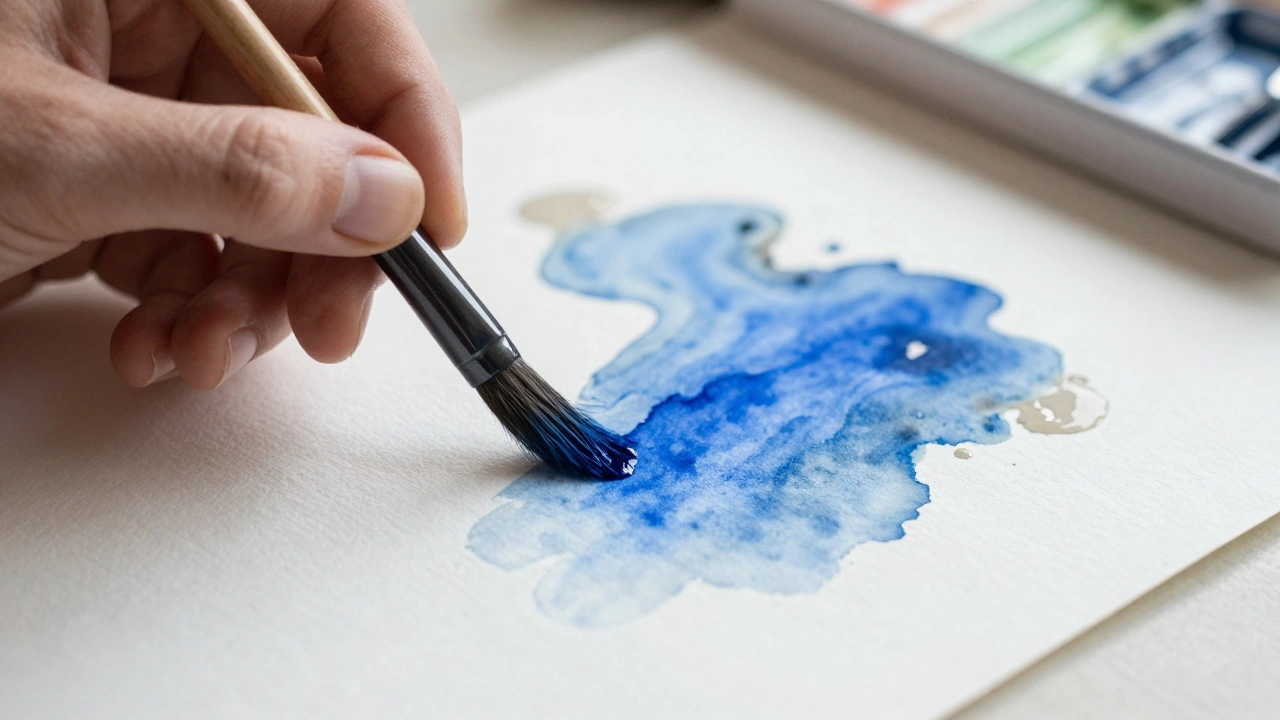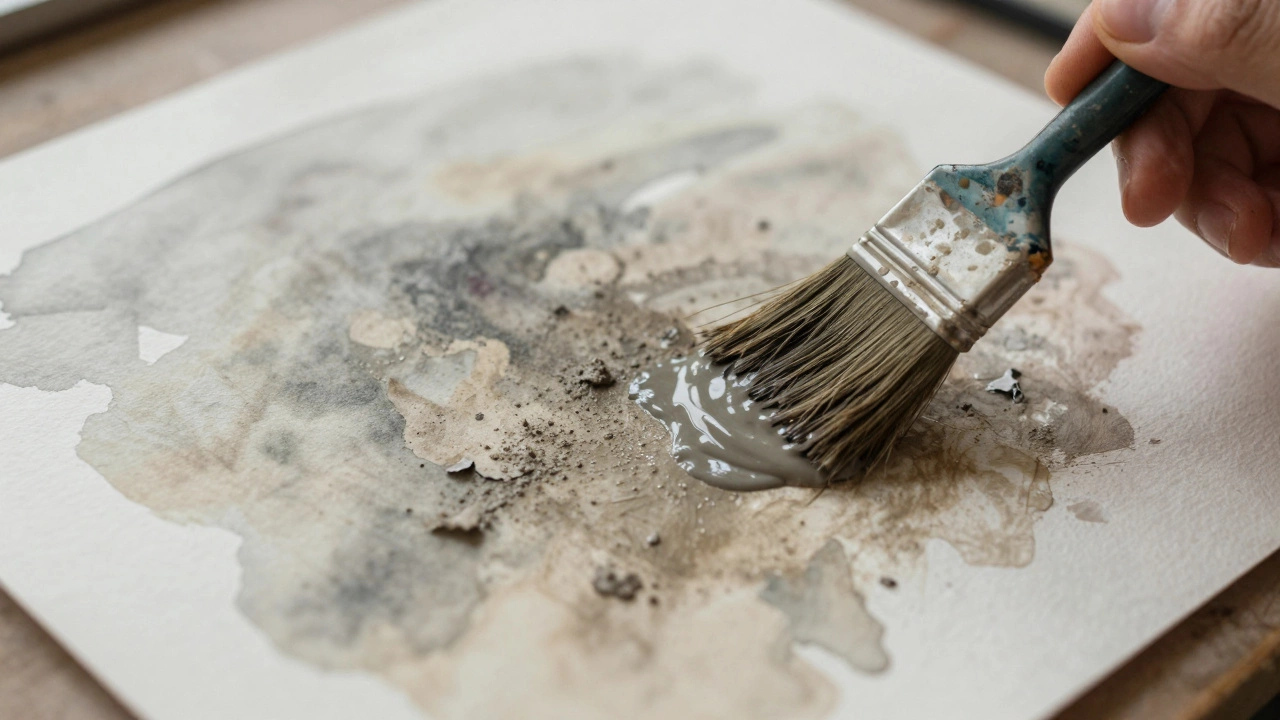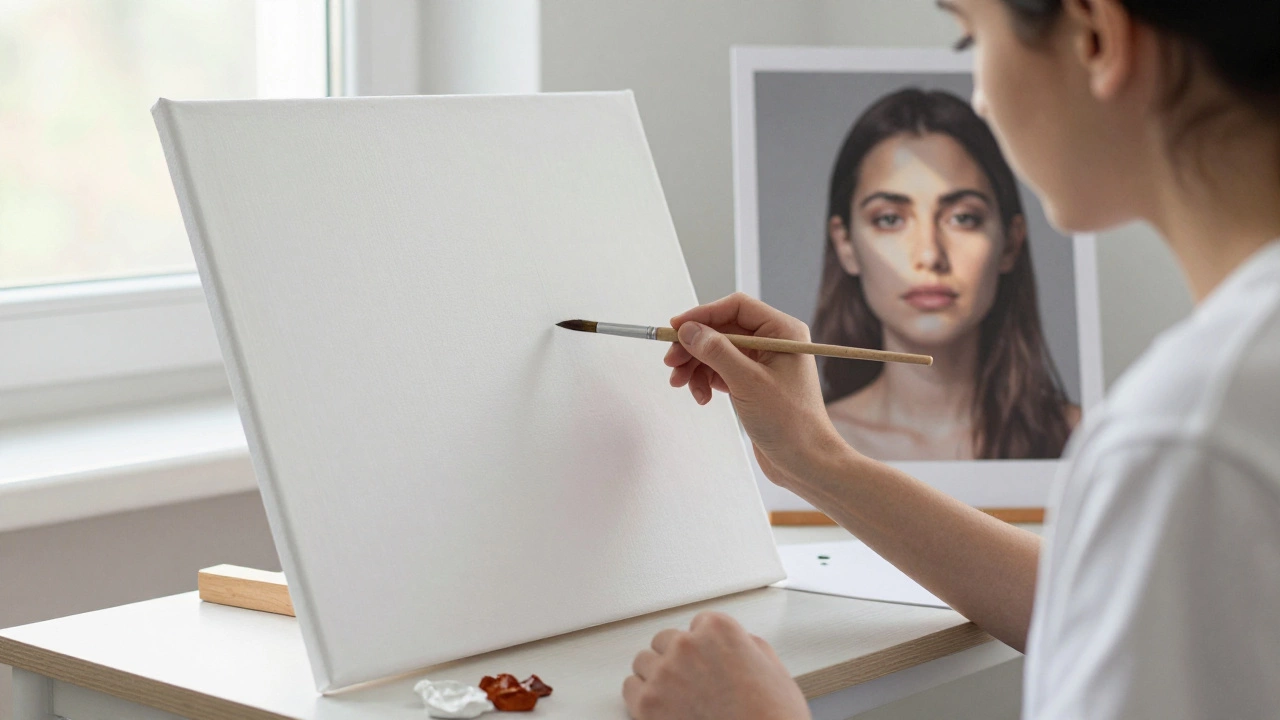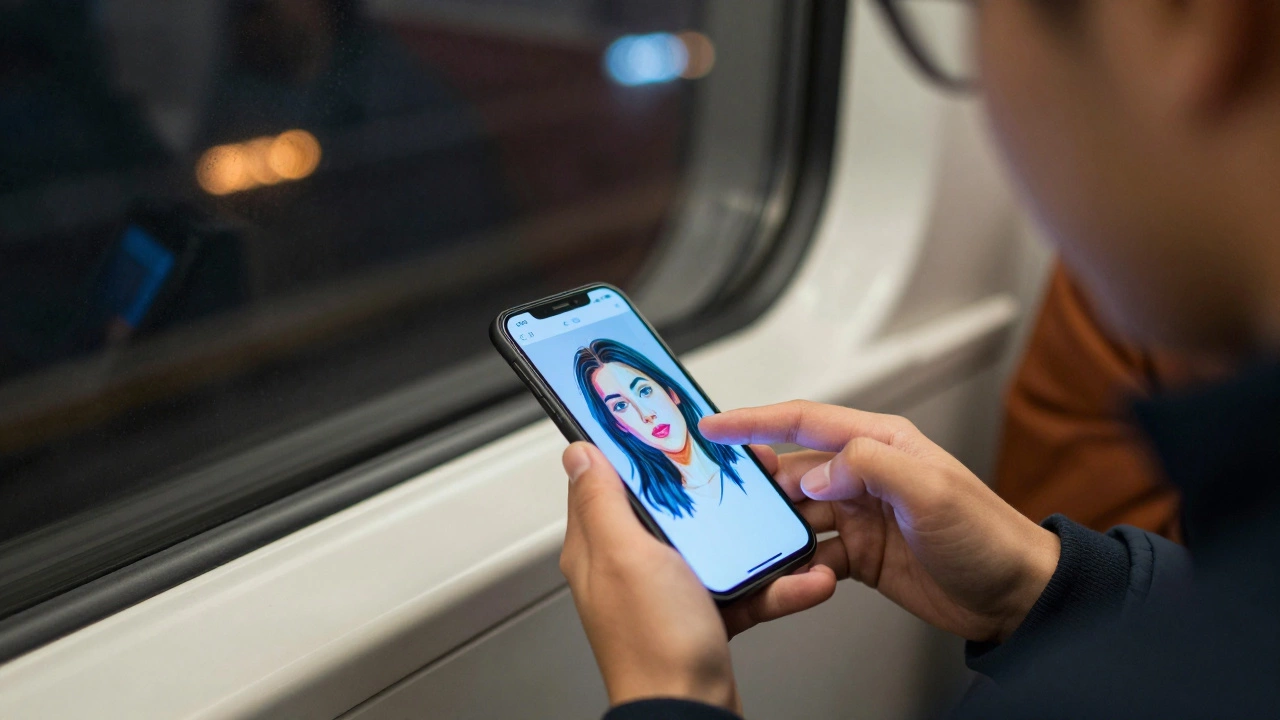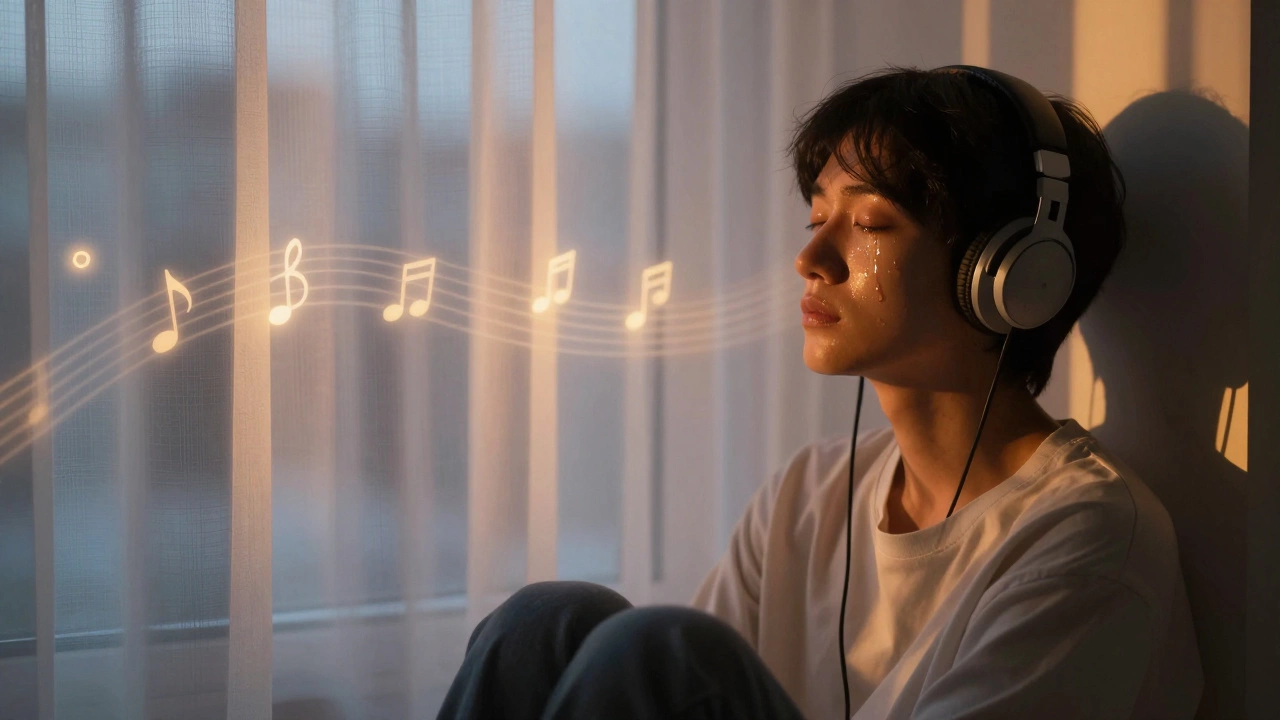Ever wondered if that quirky print in your attic is secretly worth a small fortune? It's not crazy to think so—sometimes the most unassuming pieces can surprise you. To figure out a print's value, you have to look beyond the image itself. The artist matters, sure, but so do things like how many were made, whether it’s signed, and what kind of condition it’s in.
Art prints get confusing fast. Some are mass-produced posters, others are limited edition runs with each one numbered and signed by the artist. The second kind can be shockingly valuable, depending on the artist and how rare the print is. It’s not all about famous names, either—sometimes up-and-coming artists or older pieces from lesser-known creators end up being gold for collectors. Condition is huge, too. Faded colors, water stains, or tears can drag the value down fast, while a crisp, clean print is way more appealing on the market.
- Knowing What Counts as an Art Print
- Spotting Key Value Markers: Artist, Signature, and Editions
- Condition and Quality: Why Care Matters
- Market Demand: Who Wants the Print?
- Red Flags and Hidden Gems: Extra Tips for Collectors
Knowing What Counts as an Art Print
A lot of folks mix up art prints with posters, but they're not the same thing. An art print is usually a high-quality reproduction or an original work printed in a limited quantity, while posters are mass-produced and not meant for collecting. The most valuable art prints are usually created by processes like lithography, screen printing, or etching—methods artists actually use to make each print special.
When you’re trying to figure out if something is a valuable art print, check how it was made. Here are a few types you’ll run into:
- Lithographs: Created using a stone or metal plate. Famous artists like Picasso and Chagall made a bunch of these.
- Screenprints (or silkscreens): Ink is pushed through a mesh, which lets artists play with vibrant colors. Andy Warhol’s prints are a great example.
- Etchings and engravings: These come from metal plates scratched by the artist, usually with a lot of detail.
- Giclée prints: These are high-quality digital reproductions, often on fancy paper or canvas. Some can be valuable, especially from popular living artists.
But here’s the catch—just because something looks like art doesn’t mean it’s an art print made for collectors. Mass-market posters of Van Gogh’s sunflowers? Fun for a dorm room, but not going to break the bank. Limited edition prints with signatures or numbers? That’s where things can get interesting.
If you see a number like “15/100” at the bottom, it means yours is the 15th print out of 100 that exist. Usually, the smaller the edition size, the better. For instance, a print from a run of 25 is likely to be more valuable than one of 1,000, even by the same artist. It’s all about rarity and demand.
| Type of Print | Typical Edition Size | Value Potential |
|---|---|---|
| Hand-pulled Lithograph | 10-200 | High |
| Screenprint | 50-500 | High if signed |
| Giclée | 50-1000 | Varies |
| Poster | 1,000+ | Low |
So, before thinking your print is special, get familiar with the kind of print you have. Flip it over (gently!) and look for clues, then compare to what’s out there. If it checks the right boxes, you might just have something worth bragging about—or selling.
Spotting Key Value Markers: Artist, Signature, and Editions
Here’s where things start getting interesting for anyone eyeing valuable art prints. Not all prints are created equal—what sets the real deals apart are things like who made it, if it’s signed, and how many copies exist.
First up, the artist. Prices can jump sky-high if the artist is well-known or if their work is suddenly in the spotlight. Think about Andy Warhol, Keith Haring, or Yayoi Kusama—prints by famous artists like this can bring in thousands, sometimes even six figures if the edition is small and in great shape. But don’t count out newer names; an emerging artist with a growing following can become highly sought after fast.
Next, look for a signature. Is it signed by hand? That instantly boosts a print’s appeal and price. A hand-signed print usually means the artist approved the run personally. Pay attention to where the signature is—some artists sign in pencil at the bottom border, and sometimes it’s part of the actual print (which is worth less). Pencil or ink signatures above, along with a number, are best. Here’s how they usually look:
- Bottom left: Edition number (like 14/50)
- Bottom right: Artist’s handwritten signature
Editions make a big difference too. Limited editions—like where there are only 100 or 200 copies—are usually worth much more than open editions or mass-produced posters. Collectors go crazy for anything rare. If you see something labeled "AP" it means Artist’s Proof; these are even rarer and sometimes more valuable than the numbered editions.
| Edition Label | What It Means | Value Impact |
|---|---|---|
| 1/100 | First print of a 100-run edition | Often more collectible, especially early numbers |
| 25/100 | Standard limited edition | Still valuable, especially if signed |
| AP | Artist’s Proof | Rarer, sometimes higher value |
| Open Edition | Unlimited prints | Lower value, usually decorative only |
If you’re hoping to buy—or sell—a valuable art print, these three markers make a huge difference. They aren’t the only things to watch, but they’re always the first checkpoint. Spot these, and you’re one step closer to figuring out if your print’s a winner or just wall filler.

Condition and Quality: Why Care Matters
You can have a print by a legendary artist, but if it’s got rips, yellowing, or stains, the value drops fast. Condition isn’t just a collector’s obsession—it’s a real money factor. In the art world, “mint condition” means the print looks basically the same as when it first left the studio. Not many old prints stay perfect, so when you find one that’s clean, collectors take notice.
Let’s get specific. Sunlight can fade colors, and humidity or sticky fingers leave permanent marks. Even rolled-up edges (called creasing) bother serious buyers. Some minor issues are fixable by professionals, but big problems—like mold, tears, or missing sections—give even the prettiest images a tough time on the market.
- Look for bright, unfaded colors. Any change in the original colors can slash the price.
- Check the paper edges. Jagged, torn, or water-damaged edges are a red flag.
- Avoid prints with foxing. This is when little brown spots appear, usually from moisture or bad storage.
- Be careful with repairs. Obvious taping or bad patch jobs often decrease value more than leaving the flaw alone.
If you want hard numbers, here’s a look at how condition affects resale value for valuable art prints:
| Condition Grade | Typical Value (as % of mint) |
|---|---|
| Mint/Near Mint | 100% |
| Lightly Used (tiny flaws) | 70–90% |
| Worn (noticeable flaws, minor repairs) | 40–60% |
| Poor (major damage, stains, heavy fading) | Less than 25% |
Something else to know: expert collectors often store their prints in archival sleeves, away from sunlight and heat. It’s not them being weird—this really helps prints keep their quality and value. You don’t need a museum setup, but keeping your prints flat, dry, and out of direct sun is a smart move.
Market Demand: Who Wants the Print?
If you’re trying to figure out whether your print is actually valuable, you’ve got to think about who’s interested in it right now. Sometimes a limited edition print seems kind of ordinary but blows up because collectors want that specific artist’s work in their lineup. Think about Banksy’s prints—the moment his stuff hits an auction, there’s a mad rush. But even lesser-known artists can get hot if the market shifts or a gallery features their work.
Collectors and galleries drive a lot of that demand. But don’t forget regular folks who love decorating with trendy artists. Demand isn’t set in stone—it changes with tastes, pop culture, and even social media trends. Back in the early 2000s, Andy Warhol prints weren’t exactly flying off the shelves, but now? Even small Warhol silkscreens can fetch thousands because pop art is in again.
Here’s what actually pushes up the demand for art prints worth something:
- Artist Buzz: If the artist is making headlines or getting major gallery shows, demand spikes.
- Trendy Styles: Styles in demand (think abstract, street, or minimalist) make those prints hotter.
- Backstory: Prints tied to a cool story or limited by a special event get more attention.
- Edition Size: Scarce editions (say, under 100) draw bigger crowds of buyers than a print run of 5,000.
It’s all about who is looking. To get a handle on current market demand, check out recent sales on sites like Artsy, Sotheby’s, or even eBay for less expensive pieces. Forums and Facebook groups for art collecting are goldmines for finding out what’s catching eyes (and wallets).
| Artist | Print Title | Edition Size | 2024 Auction Price (USD) |
|---|---|---|---|
| Banksy | Girl with Balloon | 150 | 185,000 |
| Yayoi Kusama | Pumpkin | 120 | 28,500 |
| Shepard Fairey | Hope | 600 | 3,400 |
So, the next time you’re holding a print and wondering, “Who even wants this?”—remember, value is all about demand. If people are talking, sharing, or fighting over the print on resale sites, that’s your clue it might be the real deal.

Red Flags and Hidden Gems: Extra Tips for Collectors
Seasoned art collecting pros know that finding a valuable print is a mix of instinct, experience, and knowing what to watch for. A few red flags can help you dodge overhyped junk, while certain clues can lead you right to a genuine treasure. Here’s what I look for every time Nathaniel and I hit a flea market or estate sale.
- Too Good to Be True Pricing: If you see something by a super-famous artist (like Picasso or Warhol) priced way under the usual market value, take it as a warning sign. Fakes and reproductions are everywhere, especially online. Check auction records on sites like Sotheby’s or Christie's to know what a real one usually goes for.
- Off-Register Printing: This is a fancy way of saying the colors don’t line up right, which leads to blurry outlines or weird shadows. Authentic valuable art prints usually have sharp, clean details. Poor registration often means it’s a cheap reproduction.
- Missing Edition Info: If there’s no edition number (like 12/75) or signature, especially with modern prints, tread carefully. High-value prints nearly always have both. An authentic numbered limited edition print signals it was meant for collectors, not mass decor.
- Unrealistic Backstories: Sellers sometimes spin wild stories about the print’s past owner, secret origins, or “lost” artist fame. These tales may be fun, but don’t let them sway you if the proof isn’t there. Always double-check the facts.
On the flip side, what makes a hidden gem stand out? Here are a few things that make me stop and look closer:
- Early Works or Proofs: Sometimes artists test new ideas with only a handful of prints. These proofs (marked “AP”, “PP”, or “HC”) can be even rarer than regular editions. If you spot one by an artist with a growing reputation, grab it.
- Prints from Closed Studios: Some legendary print studios (like Tamarind or Universal Limited Art Editions) made limited runs for big name and emerging artists. Their chop mark or blind stamp can add real collector value.
- Unusual Paper or Techniques: Top artists love experimenting. Special textured papers, embossing, or hand-finishing can make a print much more special. Check the paper for genuine watermarks or impressed stamps.
I’ve dropped a quick snapshot below comparing common red flags with green lights you want to see:
| Red Flag | Hidden Gem |
|---|---|
| Missing signature or edition number | Signed, numbered by hand |
| Fuzzy lines or pixelated colors | Crisp, sharp details |
| Generic paper (no watermark or stamp) | Unique paper with watermark, chop mark, or emboss |
| Wild price swing from typical value | Fair market price matches auction records |
If you ever feel unsure about a limited edition print or think you might have spotted one of those hidden gems, don’t be afraid to ask an expert or get a second opinion. Sometimes the best finds are hiding right in plain sight.
